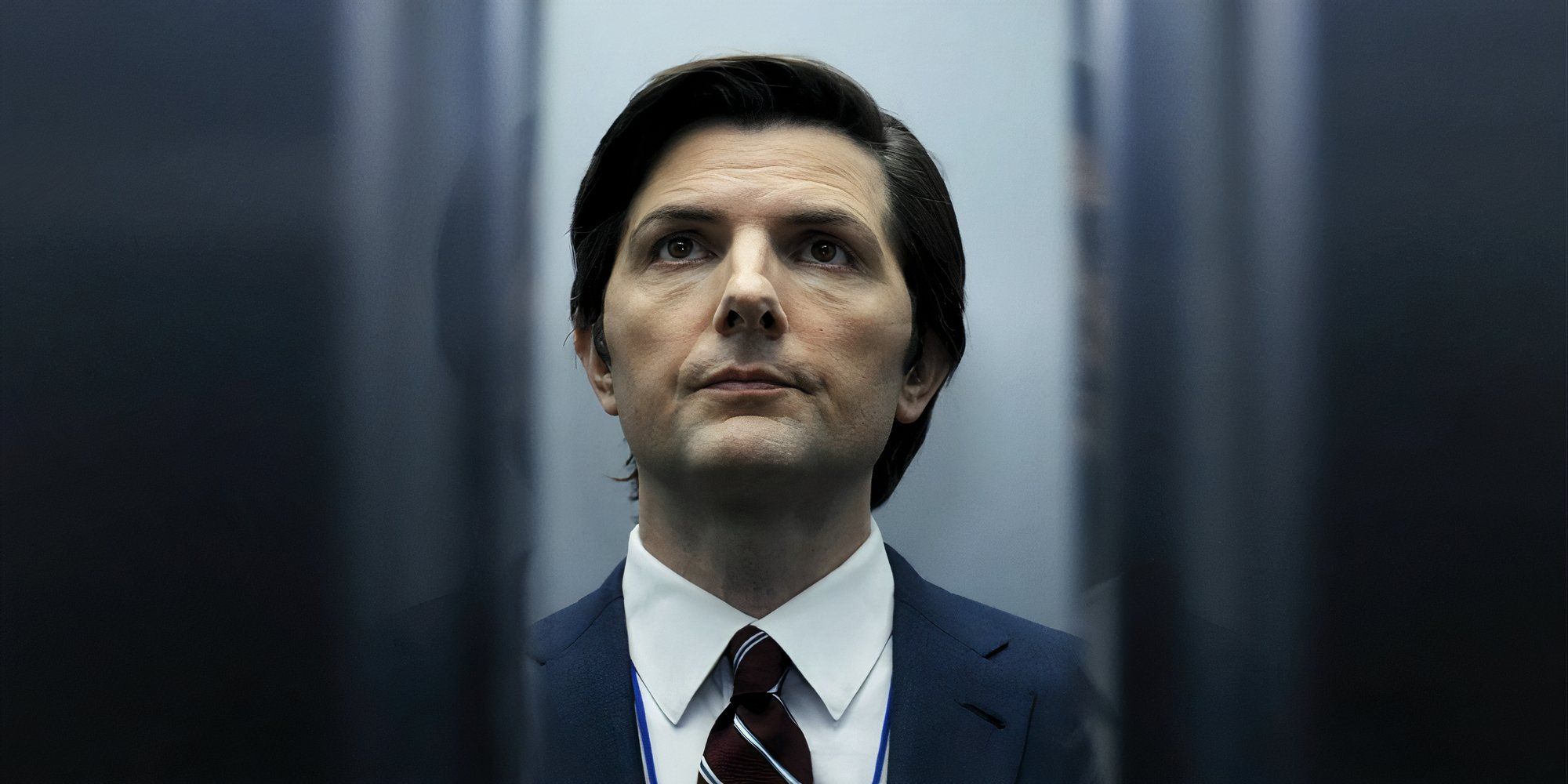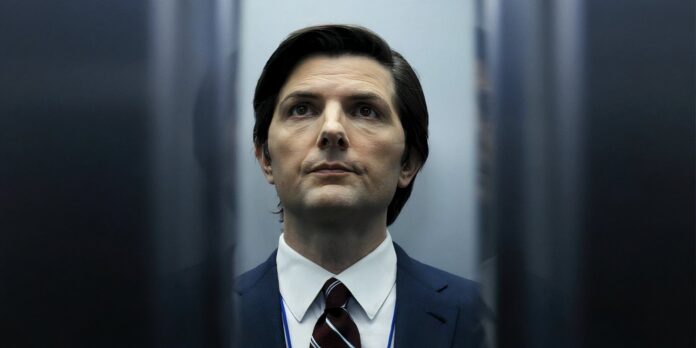
You might be conversant in the visible impact in Apple TV+’s Severance that occurs when Lumon workers take the severed flooring elevator. Because the actor within the scene shifts gears between their character’s severed and unsevered modes, their head will get both wider or narrower and the elevator appears to alter in measurement behind them. This cinematography method, referred to as a dolly zoom or “zolly,” is definitely fairly widespread, and also you’ve seen it greater than you suppose — ever heard of the “Vertigo impact”?
How Does a Dolly Zoom Shot Work?
No, it’s not by magic. The best way a dolly zoom works is that the bodily physique of the digital camera strikes away from the topic of the shot, whereas the digital camera operator concurrently zooms in on the topic through the in-camera operate, and vice versa. This retains the topic in clear focus whereas increasing the depth of the shot in real-time.
The method originates from the 1958 Alfred Hitchcock movie Vertigo and was created by cinematographer Irmin Roberts. It’s been utilized in motion pictures and TV exhibits since then to emphasise a way of disorientation, imbalance, dramatic realization, and different kinds of real-time lack of psychological or emotional defenses. You may acknowledge it from that “Get out of the water” scene in Steven Spielberg’s Jaws (1975). Or possibly you keep in mind the impact from Gi-hun’s response to his umbrella dalgona in Hwang Dong-hyuk’s hit sequence Squid Sport. Rian Johnson and cinematographer Steve Yedlin have used the impact in each Knives Out movies to this point.
It is no totally different in animation; the dolly zoom impact is created when Simba faces an impending stampede in Rob Minkoff’s The Lion King (1994), and for a whiplash impact throughout Anton Ego’s pivotal flashback in Brad Fowl’s Ratatouille (2007). The great dolly zoom is throughout us, however for Severance, the Vertigo impact is vital to the sequence.
‘Severance’ Makes use of the Basic Dolly Zoom for Its Well-known Elevator Transitions
Severance cinematographer Jessica Lee Gagné defined that the dolly zoom is used within the sequence to make a transparent distinction between the inside and outside worlds of the present. Lee Gagné advised Selection that the elevator sequence is the bridge between the extra studio-based, long-lens really feel of the outie realm, and the extremely surveilled and uncanny inside of Lumon Industries. In keeping with Lee Gagné on an episode of the Go Inventive Present podcast, the manufacturing workforce went by an arsenal of various dollies, together with a programmable digital camera crane referred to as a Technodolly. However as a way to obtain the elevator sequence, the workforce usually makes use of Kuper controls, developed by movement management specialist Anthony Jacques, which make the most of pc software program that adaptively calculates in-camera zooming whereas the dolly portion is operated by hand.
To make sure that the dolly zoom impact could be, properly, efficient, Lee Gagné used a 19-90mm Panavision zoom lens and stored inside the 19-30mm vary when capturing the Severance elevator scenes. With an side ratio of two.35:1 – which is far wider than your common TV side ratio of 16:9, and which is what sandwiches your video between these two black bars – the zoom impact of the elevator sequence gives a refined however detectable shift in capturing type. Undoubtedly try StudioBinder’s rationalization of the dolly zoom for a deeper dive into the method.
Associated
‘Severance’ Season 2 Lands Stellar Rotten Tomatoes Rating Forward of Premiere
The brand new season debuts on January 17.
‘Severance’ Creators Name Their Iconic Transition the “Fritz Lower”
On high of the traditional dolly zoom, Severance creator-director Ben Stiller and editor Geoffrey Richman additionally defined to Selection that the acquainted glitchy visible element that comes with scene transitions all through the sequence is made up of “random intervals of one- and two-frame edits that shuttle between the outgoing scene and the incoming scene.” The visible impact was impressed by an equally glitchy auditory impact that emerged inside the musical composition of the present. As Richman clarifies, “It’s truly not a sound impact. It’s a bit of the rating.” In reference to the ultimate shot of the opening credit, he continues, “That’s each visible and in addition a component that’s within the rating that [Theodore Shapiro, composer for Severance] wrote into the person stems of plenty of the cues that he wrote.”
The not-sound-effect was merged with the strobing visible element to create the long-lasting Severance transition, and was successfully deemed the “fritz lower” (i.e., your TV being “on the fritz”). In keeping with Stiller, the fritz lower grew to become a way of connecting the innies’ distinct tales with one another, particularly when it got here to the extreme Season 1 finale. Out of serendipity, the method created a seamless transition between characters and between realms inside the general Severance story.
Season 2 of Severance premieres January 17 on Apple TV+ within the U.S.
Mark leads a workforce of workplace staff whose reminiscences have been surgically divided between their work and private lives. When a mysterious colleague seems exterior of labor, it begins a journey to find the reality about their jobs.
- Launch Date
-
February 18, 2022
- Seasons
-
2
WATCH ON APPLE TV+

